The Neuroscience Behind Modern Leadership
Neuroscience-based executive coaching reshapes how modern leaders think, decide, and influence. It’s not abstract theory—it’s the scientific blueprint behind elite performance, emotional regulation, and consistent excellence. From the first coaching session, leaders begin to understand that every breakthrough, every decision, and every display of confidence starts within the wiring of their own brain. The executive who learns how to harness neuroplasticity gains what many never achieve: control over their focus, instinct, and professional destiny.
This method works because neuroscience-based executive coaching turns the invisible mechanics of thought into measurable results. High-impact leadership isn’t random—the synchronization of key brain regions produces it. The prefrontal cortex directs planning and logic; the limbic system governs motivation and trust; and the anterior cingulate cortex mediates empathy and precision under pressure. Together, these neural systems define vision and resilience, the twin hallmarks of leadership credibility.
At MindLAB Neuroscience, modernization of leadership training begins at the cellular level. Leaders are guided to “re-code” unhelpful loops, such as fear-based hesitation or impulsivity, while grounding themselves in confidence supported by neurochemistry. Real influence grows when mental noise fades and the brain’s executive functions operate without internal resistance.
By activating the dopamine-reward network through achievable milestones and reflection, neuroscience-based executive coaching sustains motivation at a biological level rather than superficially. Each success rewires neural pathways that crave progress. When the human brain learns to associate focus with reward, it no longer resists performance pressure—it thrives on it. This is the science of modern leadership: mastery. MindLAB’s neuroscience-based executive coaching programs combine neuroscientific research with strategic behavior modeling, helping leaders build lasting neural upgrades for performance and presence
Brain-Based Leadership and Strategic Decision-Making

Neuroscience-based executive coaching teaches leaders to think not only faster—but smarter. Decision-making lies at the heart of effective leadership, and modern neuroimaging reveals precisely how the brain handles complexity under pressure. Within the prefrontal cortex reside the circuits that govern planning, prioritization, and impulse control, while the anterior cingulate cortex manages error detection and emotional weighting. When these two areas communicate efficiently, executives demonstrate clarity, composure, and strategic foresight even in chaos.
Leaders trained in brain-based leadership understand that good decisions are never made in isolation from emotion. The amygdala processes potential threat and reward cues milliseconds before conscious awareness. By practicing metacognitive awareness through neuroscience-based executive coaching, leaders reduce emotional interference and regain control of their cognitive bandwidth. The result is higher-quality reasoning and fewer reactionary errors.
Dopamine and serotonin also influence these outcomes. Dopamine rewards curiosity and forward momentum, pushing executives toward innovative, risk-aware thinking, while serotonin maintains calm, confidence, and satisfaction with incremental progress. When these neurotransmitters are balanced, teams feel secure in their leader’s judgment and energy.
This brain-based leadership model encourages a decision process built around deliberate delay—pausing long enough to move away from automatic reactions and assess long-term patterns. Over time, neural efficiency improves, allowing decisions to be made at similar speeds but with greater accuracy. Neuroscience-based executive coaching thus elevates leaders beyond intuition alone, grounding their strategic thinking in the synchronized logic and emotional intelligence of a fully optimized mind—leaders who regularly apply groundbreaking skills in realtime, translate cognitive insights into decisive action under pressure.
Brain-Based Leadership and Strategic Decision-Making

Neuroscience-based executive coaching teaches leaders to think not only faster—but smarter. Decision-making lies at the heart of effective leadership, and modern neuroimaging reveals precisely how the brain handles complexity under pressure. Within the prefrontal cortex reside the circuits that govern planning, prioritization, and impulse control, while the anterior cingulate cortex manages error detection and emotional weighting. When these two areas communicate efficiently, executives demonstrate clarity, composure, and strategic foresight even in chaos.
Leaders trained in brain-based leadership understand that good decisions are never made in isolation from emotion. The amygdala processes potential threat and reward cues milliseconds before conscious awareness. By practicing metacognitive awareness through neuroscience-based executive coaching, leaders reduce emotional interference and regain control of their cognitive bandwidth. The result is higher-quality reasoning and fewer reactionary errors.
Dopamine and serotonin also influence these outcomes. Dopamine rewards curiosity and forward momentum, pushing executives toward innovative, risk-aware thinking, while serotonin maintains calm, confidence, and satisfaction with incremental progress. When these neurotransmitters are balanced, teams feel secure in their leader’s judgment and energy.
This brain-based leadership model encourages a decision process built around deliberate delay—pausing long enough to move away from automatic reactions and assess long-term patterns. Over time, neural efficiency improves, allowing decisions to be made at similar speeds but with greater accuracy. Neuroscience-based executive coaching thus elevates leaders beyond intuition alone, grounding their strategic thinking in the synchronized logic and emotional intelligence of a fully optimized mind.
The Neuroscience of Likeability and Influence

Likeability may sound subjective, but neuroscience has revealed it as a measurable phenomenon shaped by the chemistry of trust, empathy, and mirror‑neuron synchronization. In neuroscience‑based executive coaching, likeability is not about charm or performance—it’s about communicating safety and authenticity at the neural level. When people feel psychologically secure in a leader’s presence, their brains release oxytocin and dopamine, hormones that promote cooperation, energy, and loyalty.
Brain‑based leadership focuses on intentionally cultivating these neurochemical conditions. Leaders who practice congruence—alignment between words, facial expressions, and gestures—activate their team’s mirror‑neuron networks. This mirroring process allows others to “feel felt,” the foundation of social cohesion and persuasion. Neuroscience‑based executive coaching helps leaders polish micro‑expressions and body language so that nonverbal communication reinforces credibility rather than disrupting it.
Likeability also emerges from emotional regulation. Calmness projects reliability, while volatility erodes confidence. Neuroimaging confirms that people subconsciously interpret an unpredictable leader as a threat, activating the amygdala and shutting down creative thought. In contrast, approachable authority keeps the prefrontal cortex engaged in team members, supporting open dialogue and innovative contribution.
This understanding changes the definition of influence. Persuasion no longer depends on authority or hierarchy; it depends on biological resonance. The more a leader manages their internal signals, the more they naturally guide others’ emotions. Neuroscience‑based executive coaching turns influence into an authentic state of synchrony—leading not by control, but by connection.
Cognitive Agility: The Power to Pivot with Precision
In a volatile, high‑velocity economy, success favors leaders who can pivot fast without losing focus. Cognitive agility—the brain’s capacity to switch perspectives, patterns, and priorities—is a defining advantage of neuroscience‑based executive coaching. It is more than multitasking; it is the ability to anticipate change, reframe challenges, and adapt leadership style instantly while maintaining coherence and confidence.
In neuroscience, cognitive agility is traced back to the prefrontal‑parietal network, which manages flexible thinking and creative problem‑solving. When leaders are reactive, this network overloads and defaults to linear logic. Neuroscience‑based executive coaching builds flexibility by deliberately cross‑training brain pathways: alternating analytical reasoning with open‑ended imagination, logic with empathy, and data with narrative. These shifts strengthen white‑matter connectivity and stimulate the anterior cingulate cortex, improving both innovation and clarity.
Pivoting effectively also requires emotional agility. Every shift in strategy triggers subconscious resistance in the limbic system because change threatens predictability. Brain‑based leadership techniques such as reframing, active curiosity, and psychological distancing retrain the amygdala to interpret uncertainty as an opportunity rather than a threat. Over time, leaders conditioned through neuroscience‑based executive coaching learn to thrive in volatility rather than tolerate it.
When cognitive agility becomes second nature, adaptability ceases to feel like chaos; it becomes a controlled state of creativity. Leaders harness neuroplasticity to adjust teams, markets, and strategies in real time. This is why adaptable brains consistently outperform rigid ones—because flexibility is not weakness; it is a measurable, trainable form of intelligence, and neuroscience‑based executive coaching turns it into a leadership superpower.
Leadership Resilience Through Neuroplastic Growth

Neuroscience-based executive coaching is the key to developing true leadership resilience. Resilient leaders are not born with fixed traits—they use the science of neuroplasticity to build endurance, adaptability, and reliability. Leaders who work with neuroscience-based executive coaching learn to regulate stress patterns, recover rapidly from setbacks, and persevere when competitors falter. This edge begins within the brain, where repeated practice and specific coaching interventions strengthen core pathways.
The principle behind resilience is simple: the brain adapts through repeated exposure and recovery. In brain-based leadership, the amygdala recognizes threats, the hypothalamus releases stress hormones, and the prefrontal cortex chooses strategic responses. Neuroscience-based executive coaching shows leaders how to interrupt this default loop. Controlled breathing, cognitive reframing, and focused reflection cultivate neural pathways associated with calm, clarity, and energy renewal. Each resilience-building exercise rewires the mind for rapid bounce-back, transforming stress into fuel for personal growth.
A cornerstone of brain-based leadership is understanding that real resilience depends on recovery. Neuroscience-based executive coaching trains leaders to value rest and renewal as primary drivers of creative and strategic thinking. Dopamine and serotonin systems are intentionally activated through scheduled wins, reflection breaks, and healthy self-reward—fueling motivation and preventing burnout. When brain-based leadership is reinforced by dopamine-driven reinforcement, resilience becomes second nature.
Leaders who master resilience through neuroscience-based executive coaching embody consistent performance regardless of chaos. Adversity—whether organizational shifts, personal setbacks, or market volatility—becomes an opportunity for neuroplastic transformation. Every recovery moment strengthens the brain’s belief in growth and adaptability. Over time, resilience becomes a conscious skill, then an unconscious habit, producing leadership that is as reliable as it is innovative. By focusing relentlessly on neuroscience-based executive coaching, organizations can build teams and cultures spurred by endurance, creativity, and unwavering confidence.
Empathy and the Science of Human Connection

Neuroscience-based executive coaching demonstrates that empathy is not a soft skill—it is a strategic leadership mechanism grounded in neurobiology. Empathy allows leaders to anticipate needs, unite teams, and inspire genuine engagement. It functions through mirror-neuron networks and limbic resonance—systems that enable individuals to feel and reflect one another’s emotional states. The more active these neural pathways are, the more effectively a leader can connect, motivate, and retain top performers.
Brain-based leadership relies heavily on emotional attunement. The capacity to read micro-expressions, tone, and body language stems from the insula and anterior cingulate cortex—regions directly tied to intuitive awareness. Through neuroscience-based executive coaching, leaders learn techniques that heighten this neural sensitivity, enabling them to gauge a room’s mood within seconds. The outcome is sharper psychological alignment, smoother communication, and stronger cooperation.
Empathy is also inseparable from emotional regulation. The amygdala responds to social cues before conscious thought; unregulated emotional energy can distort interpretations, leading to defensive or dismissive reactions. Neuroscience-based executive coaching trains leaders to slow this automatic process, ensuring empathy remains authentic and informed rather than reactive. When emotional awareness merges with cognitive control, leaders lead with balance, making empathy both strategic and reliable.
From a performance perspective, empathy drives ROI by strengthening trust and innovation. Teams working under empathetic leadership display higher creativity, reduced turnover, and sustained motivation, as evidenced by measurable hormonal responses, such as elevated oxytocin and dopamine. Neuroscience-based executive coaching reframes empathy as executive intelligence—the ability to connect, inspire, and direct through science. Leaders who embrace empathy through brain science not only elevate their influence but also transform organizational culture into one rooted in trust, inclusion, and authentic human performance.
Building High-Performance Teams: The Neuroscience of Hiring and Strength Alignment

High-performing teams don’t happen by accident; they are engineered through intention, insight, and science. Neuroscience-based executive coaching equips leaders with the brain-based strategies to select, organize, and motivate top talent based on cognitive diversity and strength alignment. By understanding how the brain responds to trust, reward, and feedback, leaders make decisions that optimize collaboration and engagement across every tier of the organization.
From a neuroscience perspective, hiring success depends on the brain’s ability to perceive potential. The human prefrontal cortex evaluates compatibility not only by skills but by subtle social and emotional signals. Through neuroscience-based executive coaching, leaders learn to detect implicit cognitive biases that otherwise undermine objective hiring decisions. This awareness allows them to target the neural triggers for fairness and curiosity, promoting a culture of inclusion that reflects modern leadership values.
Strength alignment lies at the center of brain-based leadership. Every team member operates with individual neural preferences—some excel in analytical pattern recognition, while others thrive in creative ideation or social cohesion. Neuroscience-based executive coaching helps executives map these neural tendencies to role design, creating an environment where strengths rather than weaknesses define contribution. When employees are neurologically aligned with their natural inclinations, dopamine and serotonin levels rise, boosting motivation, learning, and satisfaction.
The science doesn’t stop at hiring. Leaders trained through neuroscience-based executive coaching continually re-evaluate team architecture as their organizations evolve. By recognizing patterns of cognitive overload, empathy fatigue, or novelty depletion, they pivot structures before performance dips. Brain-based leadership transforms team development into a living system—adaptive, self-correcting, and driven by continuous feedback. The result is an empowered workforce that thrives under neuroscience-informed leadership and consistently delivers measurable results.
Leading Consistently and Reliably: Neural Pathways of Trust and Accountability

Reliability is the bedrock of sustainable leadership, and neuroscience-based executive coaching reveals how consistency is encoded in the brain. Trust is not built through words alone but through predictable neural signaling patterns. When a leader behaves consistently, the follower’s brain releases oxytocin—a neurochemical that strengthens relationships and eliminates uncertainty. Conversely, inconsistent leadership activates the amygdala’s threat response, creating hesitation, disengagement, and doubt at both conscious and subconscious levels.
Neuroscience-based executive coaching trains leaders to understand these neurological triggers and model trustworthy behavior from a biological standpoint. Consistency begins with neural coherence: aligning thoughts, emotions, and actions so the executive communicates without contradiction. When this alignment is sustained, neural networks that govern credibility and recognition strengthen, allowing teams to connect emotionally and cognitively with their leader’s message.
From a brain-based leadership perspective, reliability also depends on executive predictability. The leader’s tone, attention, and timing condition the team’s expectations. Neuroscience-based executive coaching helps leaders cultivate intentional rhythm—responding with structure during high-pressure moments rather than improvisation. Over time, these habits hard-wire stability into leadership style. This neurological reliability fosters calm, enhances morale, and sustains performance momentum even during organizational turbulence.
Accountability expands this concept further. When leaders transparently address mistakes, they rewire perceptions of safety by demonstrating vulnerability rather than weakness. In turn, the team’s prefrontal cortex interprets transparency as fairness, reducing cognitive load and building psychological safety. By embedding these behaviors through neuroscience-based executive coaching, reliability transforms into a biological expectation—teams know precisely what to expect and respond with loyalty, focus, and enduring trust.
The Future of Leadership Development in Neuroscience Coaching
The future of leadership lies squarely at the intersection of neuroscience, adaptability, and purpose-driven influence. Neuroscience-based executive coaching is not a passing trend—it is the architecture for building next-generation leaders who can navigate complexity with confidence. As organizations evolve toward hybrid cultures, rapid innovation cycles, and expectations of psychological safety, traditional management models can no longer keep pace with how the human brain actually operates under sustained cognitive demand.
Tomorrow’s most exceptional leaders will master a blend of brain-based leadership competencies: emotional regulation, empathy, cognitive agility, and leadership resilience. Neuroscience-based executive coaching bridges all four by helping professionals decode their biological feedback loops. Leaders who monitor brain-state shifts—alertness, fatigue, reward sensitivity—gain predictive power over their performance. This awareness improves energy allocation, decision control, and authenticity.
Artificial intelligence, remote collaboration, and fast-moving data streams have intensified cognitive fatigue across executive populations. Neuroscience-based executive coaching mitigates this by teaching neural recovery mechanisms—grounding, rhythmic breathing, temporal spacing—that optimize prefrontal cortex function. As future workplace ecosystems demand sustained cognitive clarity, such skills will determine who sustains influence and who succumbs to burnout.
At a developmental level, neuroleadership redefines growth. Leaders who understand neuroplasticity see every setback as a signal to expand rather than a defeat. As they reinforce dopamine-driven learning habits, their brains reward persistence rather than perfection. This turn toward resilience, balance, and vision is what positions neuroscience-based executive coaching as the engine of enduring leadership relevance.
In the era ahead, corporate growth will mirror neural growth—both depend on flexibility, trust, and constant recalibration. This approach equips leaders to apply groundbreaking skills in real time, translating cognitive insights into decisive action under pressure. Those who ground their leadership in neuroscience will not just survive disruption; they will define it.
FAQ
What makes neuroscience‑based executive coaching different from traditional coaching?
Neuroscience‑based executive coaching goes beyond motivational dialogue or behavior tracking. It focuses on understanding and rewiring the neural pathways that drive every decision, reaction, and leadership habit. Traditional coaching often centers on external goal setting, whereas neuroscience‑driven methods target the u003cemu003esourceu003c/emu003e of behavior—how the brain evaluates risk, manages emotion, and sustains focus. By teaching leaders to engage the prefrontal cortex and calm the amygdala, this approach builds stable, high‑performance states that last long after the coaching sessions end.u003cbru003eu003cbru003e
How does neuroscience‑based executive coaching improve leadership performance?
Performance increases because this model strengthens the brain networks responsible for decision‑making, empathy, and emotional regulation. Techniques such as cognitive reframing, micro‑habit formation, and reflective awareness enhance neuroplasticity—the brain’s ability to create stronger, more efficient neural connections. Over time, these changes boost clarity, resilience, and adaptability, translating into consistent, authentic leadership behavior under pressure.
Why is this neuroscientific approach so effective for high‑level executives?
Executives operate under continuous stress, which drains prefrontal activity and impairs creativity. Neuroscience‑based executive coaching teaches them how to regulate cortisol, balance dopamine, and maintain a productive “flow” state. By combining data from psychology, neurochemistry, and behavioral research, this coaching helps leaders control their physiological responses in real time—transforming stress into energy and uncertainty into strategic focus.
Can neuroscience‑based executive coaching help build more emotionally intelligent leaders?
Yes. Emotional intelligence begins with recognizing how emotions register in the body and brain. Through guided awareness, leaders identify their emotional triggers and learn to pause before reacting. This process reduces amygdala reactivity, strengthens empathy networks, and improves communication. The result is leadership rooted in composure, authenticity, and empathy—a proven formula for inspiring trust and enhancing collaboration.
How quickly can clients expect measurable results from neuroscience‑based executive coaching?
Many clients experience meaningful change within weeks. Neuroscience shows that neural circuits adapt rapidly when behaviors are repeated with awareness and purpose. Measurable improvements include better decision speed, stronger team engagement, and reduced burnout. Because neuroscience‑based executive coaching tracks outcomes behaviorally and neuropsychologically, progress isn’t anecdotal—it’s backed by data and observable performance metrics.u003cbru003e
Is neuroscience‑based executive coaching useful for team development, not just individuals?
Absolutely. Effective teams rely on cognitive diversity and shared psychological safety—both measurable through neuroscience‑informed practices. By mapping individual strengths and aligning them with team roles, organizations enhance motivation and reduce friction. Neuroscience‑based executive coaching teaches leaders to recognize patterns of engagement and mental fatigue, allowing them to redesign workflows and sustain collective energy.
How can I apply the insights from neuroscience‑based executive coaching to everyday leadership?
Implementation begins by applying small, brain‑aligned habits each day. Scheduling high‑focus work during peak prefrontal activation hours, practicing gratitude journaling to trigger dopamine reinforcement, and holding structured reflection sessions all enhance neural integration. Over time, these routines create permanent brain‑based leadership behaviors—decisive, empathic, and adaptable—yielding measurable results for you and your clients alike.
#NeuroscienceBasedExecutiveCoaching #BrainBasedLeadership #ExecutivePerformance #CognitiveAgility #LeadershipResilience #DecisionMaking #EmotionalRegulation #Neuroplasticity #HighImpactHabits #MindLABNeuroscience





